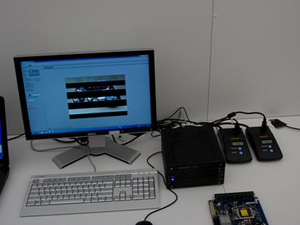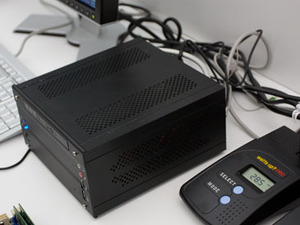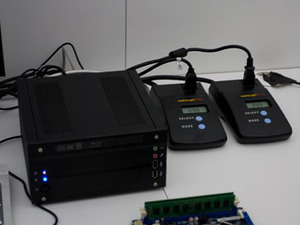
Clarkdale Details
Clarkdale will use the same socket and chipset as the recently released Lynnfield processors, meaning LGA1156 and P55 are par for the course. Clarkdale also includes the same dual-channel DDR3-1333 memory controller and 16 PCI-Express 2.0 lanes (1x16 or 2x8 slots), meaning there's support for up to two discrete graphics cards should you want to upgrade.Of course, this raises the important 'double attach' scenario - Intel is effectively giving away its integrated graphics chipset for free with every Clarkdale processor and not everyone is going to want to use it. In that situation, you're effectively paying for something you're not going to use and, from what we've seen, you're unlikely to see a dual-core processor without the bundled integrated graphics.
One concern I had was that you wouldn't be able to disable the GPU if you're using a discrete graphics card, but when I asked Intel about this, the company said it was "definitely possible". Unfortunately though, the whole piece of silicon can't be disabled because it also contains the PCI-Express and memory controllers, but it's good to know that the integrated graphics chip's transistors can be turned off.


The power consumption for the whole system at idle was less than 30W - the monitor was plugged into the other Watts Up meter
Intel shied away from talking about the gory details of Westmere as a whole during IDF, but there were a few pieces of information which the company was willing to disclose. Clarkdale features two physical cores, each with Hyper-Threading Technology, meaning a total of four threads. There'll be up to 4MB of Intel Smart Cache (presumably shared L3 cache, with 256KB of L2 cache per core).
There's also support for AES (advanced encryption standard) acceleration, which will help to accelerate tasks involving file encryption and decryption. However, Intel couldn't tell us whether performance in a fully encrypted operating system environment would be similar to performance without an encrypted hard drive though; typically, hard drive encryption has had a huge impact on overall system performance so it hasn't been widely implemented to date. Hopefully, with Clarkdale's built in AES acceleration, a fully encrypted system will be more feasible.


At full load, running Cinebench 10, the system consumed just 70W of power, which is ideal for a home theatre PC. When asked, Intel said that power consumption during Blu-ray playback was around 45W.
Turbo Boost is also present in Clarkdale, although no details were revealed on how far we can expect the chip to Turbo. My inclination is that it won't Turbo to a particularly high clock speed - I say this because there are only two cores and so the number of times you're going to be turning cores off in lighter workloads will be slim, as most applications are at least dual-threaded nowadays.
In terms of graphics performance, Intel shied away from talking about specifics inside the graphics core, but was quite keen to point out that there were a number of improvements in this portion of the chip in particular. We were told that graphics performance has improved significantly, but the spokespeople wouldn't go into details despite our best efforts to squeeze some tidbits out. The best we managed to find out was that the graphics core runs at both a higher clock speed and has more execution units, but exact details are going to have to wait until a later date.
We also asked Intel when it was likely to support DirectX 11 in its graphics cores, but the company refused to comment on its plans for Microsoft's new API. The Westmere graphics core only supports DirectX 10 and not DirectX 10.1, so we're going to have to wait for Intel to adopt newer versions of the API in its integrated graphics core. This seemed like the ideal opportunity to introduce DirectX 11 support, but it's obviously a step too far at 45nm - we're going to have to wait until Sandy Bridge.

MSI MPG Velox 100R Chassis Review
October 14 2021 | 15:04









Want to comment? Please log in.